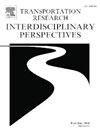从汽车依赖者到公共空间爱好者:态度的类型学如何帮助理解社会对街道空间重新分配项目的接受程度?
IF 3.9
Q2 TRANSPORTATION
Transportation Research Interdisciplinary Perspectives
Pub Date : 2025-03-01
DOI:10.1016/j.trip.2025.101370
引用次数: 0
摘要
减少汽车的拥有量和使用以及公共空间的重新分配被认为是向可持续交通和宜居城市过渡的相关部分。尽管低车干预经常引起抗议,并且接受对成功转型的重要性,但人们对街道空间重新分配措施的社会接受程度的理解有限。本研究从社区层面对临时街道空间再分配措施的态度类型进行了识别,以更好地了解居民的社会接受程度及其潜在的解释因素。使用编码框架,对慕尼黑两个社区居民的访谈笔记进行定性分析,并根据相似特征和特征组合进行分类。后来进行了深入的访谈,以细化类型并确定接受驱动因素和障碍。七种态度出现了:无车派、依赖派、环保派、公共空间爱好者、噪音敏感派、变革支持者派和满足现状派。这些类型在流动性行为和偏好、对流动性过渡的开放性以及与公共空间相关的需求和恐惧方面具有鲜明的特征。汽车依赖、汽车亲和力和娱乐噪音的增加被认为是接受障碍。相比之下,引入替代交通选择、创造公共互动空间和增加绿化被认为是可接受的驱动因素。不同类型的人可能对干预是否“公平”有相反的看法。有针对性的沟通和参与过程被证明是相关的跨类型接受因素。从业者可以从这种特定于用户组的见解中获益,从而设计更健壮的转换策略。本文章由计算机程序翻译,如有差异,请以英文原文为准。
From Car-Dependent to Public Space Enthusiast: How can a typology of attitudes help to understand social acceptance of street space reallocation projects?
Reduced car ownership and use as well as public space reallocation are understood as a relevant part of a transition towards sustainable mobility and livable cities. Despite frequent protest following low-car interventions and the importance of acceptance for a successful transition, there is limited understanding of the social acceptance of street space reallocation measures. This research identifies types of attitudes towards temporary street space reallocation measures on the neighborhood level to develop a better understanding of residents’ social acceptance and the underlying explanatory factors. Using a coding frame, interview notes with residents of two neighborhoods in Munich were qualitatively analyzed and grouped into types based on similar characteristics and combinations of characteristics. In-depth interviews were conducted later to refine the types and identify acceptance drivers and barriers. Seven types of attitudes emerged: the Car-Independent, the Car-Dependent, the Tree Advocates, the Public Space Enthusiasts, the Noise Sensitive, the Change Supporters, and the Status-Quo Satisfied. The types feature distinctive characteristics in terms of mobility behavior and preferences, openness towards a mobility transition, and public space-related needs and fears. Car dependency, car affinity, and the increase in recreational noise were identified as acceptance barriers. In contrast, introducing alternative mobility options, creating public spaces for interaction, and adding greenery were identified as acceptance drivers. Different types might have opposing perceptions of whether an intervention is “fair”. Targeted communication and participation processes proved to be relevant cross-type acceptance factors. Practitioners may benefit from such user-group specific insights to design more robust transformation strategies.
求助全文
通过发布文献求助,成功后即可免费获取论文全文。
去求助
来源期刊

Transportation Research Interdisciplinary Perspectives
Engineering-Automotive Engineering
CiteScore
12.90
自引率
0.00%
发文量
185
审稿时长
22 weeks
 求助内容:
求助内容: 应助结果提醒方式:
应助结果提醒方式:


